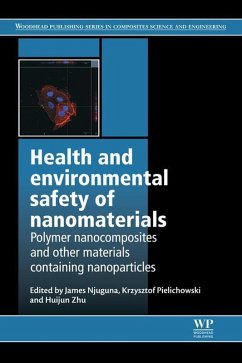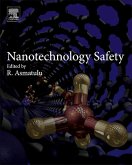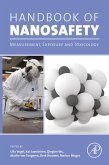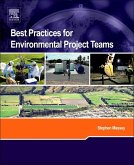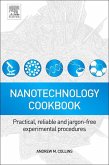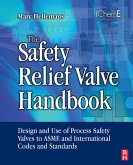Health and Environmental Safety of Nanomaterials addresses concerns about the impact of nanomaterials on the environment and human health, and examines the safety of specific nanomaterials. Understanding the unique chemical and physical properties of nanostructures has led to many developments in the applications of nanocomposite materials. While these materials have applications in a huge range of areas, their potential for toxicity must be thoroughly understood.
Part one introduces the properties of nanomaterials, nanofillers, and nanocomposites, and questions whether they are more toxic than their bulk counterparts. Part two looks at the release and exposure of nanomaterials. The text covers sampling techniques and data analysis methods used to assess nanoparticle exposure, as well as protocols for testing the safety of polymer nanocomposites. It explains characterization techniques of airborne nanoparticles and life cycle assessment of engineered nanomaterials. Part three focuses on the safety of certain nanomaterials, including nanolayered silicates, carbon nanotubes, and metal oxides. In particular, it explores the potential ecotoxicological hazards associated with the different structures of carbon nanotubes and the safe recycling of inorganic and carbon nanoparticles. The final two chapters address the risks of nanomaterials in fire conditions: their thermal degradation, flammability, and toxicity in different fire scenarios.
This is a scientific guide with technical background for professionals using nanomaterials in industry, scientists, academicians, research scholars, and polymer engineers. It also offers a deep understanding of the subject for undergraduate and postgraduate students.
Part one introduces the properties of nanomaterials, nanofillers, and nanocomposites, and questions whether they are more toxic than their bulk counterparts. Part two looks at the release and exposure of nanomaterials. The text covers sampling techniques and data analysis methods used to assess nanoparticle exposure, as well as protocols for testing the safety of polymer nanocomposites. It explains characterization techniques of airborne nanoparticles and life cycle assessment of engineered nanomaterials. Part three focuses on the safety of certain nanomaterials, including nanolayered silicates, carbon nanotubes, and metal oxides. In particular, it explores the potential ecotoxicological hazards associated with the different structures of carbon nanotubes and the safe recycling of inorganic and carbon nanoparticles. The final two chapters address the risks of nanomaterials in fire conditions: their thermal degradation, flammability, and toxicity in different fire scenarios.
This is a scientific guide with technical background for professionals using nanomaterials in industry, scientists, academicians, research scholars, and polymer engineers. It also offers a deep understanding of the subject for undergraduate and postgraduate students.
- Introduces the properties of nanomaterials, nanofillers, and nanocomposites, and questions whether they are more toxic than their bulk counterparts
- Covers sampling techniques and data analysis methods used to assess nanoparticle exposure, as well as protocols for testing the safety of polymer nanocomposites
- Explores the potential ecotoxicological hazards associated with the different structures of carbon nanotubes and the safe recycling of inorganic and carbon nanoparticles
Dieser Download kann aus rechtlichen Gründen nur mit Rechnungsadresse in A, B, BG, CY, CZ, D, DK, EW, E, FIN, F, GR, HR, H, IRL, I, LT, L, LR, M, NL, PL, P, R, S, SLO, SK ausgeliefert werden.

